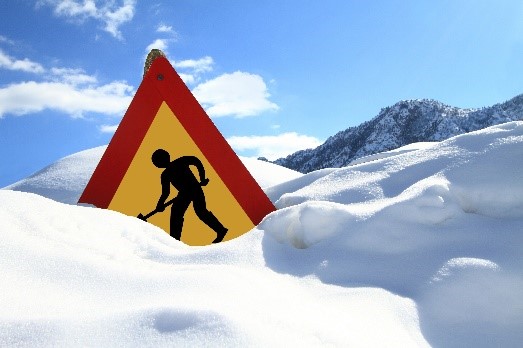 There’s no right time of year to realize you need a new roof, but perhaps one of the scariest can be a windy, snowy day in the middle of winter. Can you even replace a roof in the winter? The short answer—yes.
There’s no right time of year to realize you need a new roof, but perhaps one of the scariest can be a windy, snowy day in the middle of winter. Can you even replace a roof in the winter? The short answer—yes.
Continue reading to learn more about how winter roof replacements are done.
How Does Winter Weather Impact Roof Replacement Processes?
Although every season comes with its own challenges, there are a few specific considerations roofers need to take into account during the winter.
1. Materials
Shingles
The ideal temperature range for laminate shingles to be installed is anywhere from 4oC to 26oC, as below 4oC they could become brittle and will be more prone to cracking and breaking. That doesn’t mean that they can’t be installed in colder weather. Instead, it means extra care is required.
Sealant
Shingles are designed with a self-sealant strip that activates under the heat of the sun to effectively tab them together and prevent them from lifting in the wind. As you may expect, cold temperatures can delay this process.
While most roofing companies use four nails per shingle, it is mandatory for us to use six nails per shingle when carrying out a winter roof replacement. This approach, which is also what we offer for high-wind roof installations year-round, creates a strong and secure hold so your shingles are able to withstand winter weather conditions.
 2. Tools
2. Tools
Shingles and sealant aren’t the only materials affected by the cold. Winter can be equally tough on some of a roofer’s most often used tools like compressors and nail guns. When compression tools release air into their lines, some of the steam and humidity will inevitably transform into liquid. Below freezing this water will rapidly freeze. As ice gradually accumulates, it will reduce airflow which in turn compromises the tool’s performance.
Regardless of the season, nails always need to be driven just right. If a nail is overdriven it can tear and ruin the shingle, while underdriven nails cause shingles to sit up, creating air bubbles that leave your shingles and roof vulnerable to the effects of high winds. Unfortunately, if airlines become obstructed in cold temperatures nails may not be pushed as deep as they need to be.
To get around this potential challenge, roofers need to monitor the presence of ice in their compression tools during the winter and pay close attention to depth adjusters on nail guns.
3. Health and Safety
 Some of the top wintertime roofing hazards for roofers may include surfaces slick with ice and snow, hidden dangers like vents and skylights, and the effects of adverse weather, particularly extreme cold.
Some of the top wintertime roofing hazards for roofers may include surfaces slick with ice and snow, hidden dangers like vents and skylights, and the effects of adverse weather, particularly extreme cold.
As a homeowner, it’s important to protect yourself by ensuring you work with a roofer committed to taking the necessary steps to guarantee the safety of the individuals and crews working on your roof:
- Ask about the roofer’s health and safety program. Contractors who employ more than five people are legally obligated to have one in place.
- Make sure the roofer has both general liability and workers’ compensation insurance. If the roofer is uninsured and something goes wrong, whether a worker is injured or your home is damaged, you could be held liable for medical costs and repairs.
- Get confirmation that all employees have completed a working at heights training program.
What is the Working at Heights training program, and how does it apply to roofers? Check out our blog to learn more!
Remember that experienced contractors will know what weather they can and cannot work in and will take all necessary steps to guarantee quality workmanship.
Is a Winter Roof Replacement Worth It?
We hope these concerns haven’t left you feeling too cold to the idea of a winter roof replacement, because the reality is that there are also a number of benefits that can come with installing a new roof in the winter:
1. Availability
Since winter isn’t the traditional peak season for roofers, you may find it easier to schedule the installation for dates better suited to you.
2. Energy Use
From snow to sleet to ice and everything in between, your roof acts as a defensive barrier—keeping the cold out and the heat in. If your roof is letting warmth escape, that will both make your house uncomfortable and can inflate your energy bills.
3. Fix Problems Immediately
As we said from the start, there truly is no “right” time for you to realize that your roof needs to be replaced. Oftentimes a repair will be what you need to see you through the season, but in some cases a roof replacement is the course of action that will make the most sense.
Make sure you work with an experienced roofer committed to safe, quality workmanship that will keep your roof looking and performing its best through many winters to come.
Herb Lodde Roofing has been providing quality roof replacements and repairs since 1964. We stand behind our workmanship and are committed to delivering superior results using the best materials. Contact us today to schedule your in-home consultation!
Like this? You might also like:
